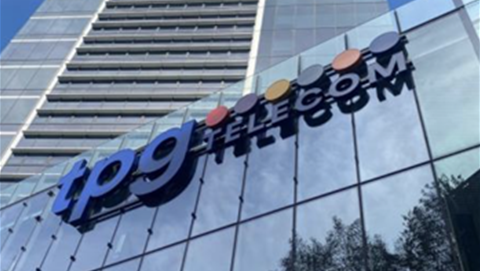Telstra has turned in a first half-year result in which total revenue grew by $696 million to pass $11.5 billion.
The key drivers for growth were Telstra’s mobile business, and its acquisition of Digicel.
Mobile revenue improved by $330 million to pass $3.8 billion, on the back of growth in both services in operation (SIOs) and postpaid average revenue per user per month (ARPU), up 4.5 percent to $50.47); and strong prepaid handset sales (up 28.7 percent to $556 million).
Mobile growth contributed to Telstra’s consumer and small business segment result, which added $399 million to reach $6.4 billion, a 6.7 percent increase.
The acquisition of Digicel Pacific helped offset otherwise lean results in Telstra Enterprise, which added $355 million to pass $3.8 billion.
Telstra Enterprise’s domestic mobile revenue grew by 1.4 percent, its domestic fixed revenue declined 2.5 percent, and network applications and services grew by two percent.
The data and customers business in Telstra Enterprise faces headwinds, according to group executive David Burns, partly because customers on legacy services are paying “above what’s a reasonable market rate”, and partly because older services are progressively being retired.
The carrier has launched a customer retention drive that particularly focuses on migrating thousands of mid-market customers to more modern and affordable services, Burns said.
It is contacting customers on an individual basis, he said, and “in those large volume segments, we’re a bit over halfway through”.
The Telstra InfraCo operation grew by 2.4 percent to pass $1.8 billion, while networks and IT – which sells network platform, data platform, and software and IT services to Telstra’s other segments – grew 12.2 percent to $138 million.
Telstra also reported a 17.1 percent fall in fixed wholesale services to $209 million.
With the NBN customer migration nearly complete, NBN Co payments for migrating Telstra customers fell from $203 million to just $44 million.
What Brady called “intense competition” in the NBN resale market led the consumer and small business segment to shrink by close to 50,000 SIOs year-on-year, but 10 percent of NBN customers are now on 100Mbps-plus plans.
However, the NBN offered some bright spots: Telstra’s NBN reseller margin grew from four percent to seven percent between the first half of FY22 and the first half of FY23.
CFO Michael Ackland told the company’s financial results webcast the carrier hopes to boost NBN reseller margins into the mid-teens into 2025.
NBN affordability, service concerns
Brady also addressed the latest offer made by NBN Co in the ongoing special access undertaking (SAU) negotiations, expressing concern over service standards and 50/20 Mbps service prices.
NBN Co wants to raise the price of its most popular 50/20Mbps service; retailers want something in return for that, namely an improvement in service standards on the tier.
Retailers broadly also have issues with the service standards included in the current SAU draft, which are several years old and largely unchanged.
On service standards, Brady said that there have been “steps in the right direction”, and that NBN Co has “guardrails within which they have to deliver”.
However, she said, Telstra will continue to “advocate for a lift” in the SAU service standards.
“We haven’t seen improvements in service standards, and we know that our customers … rely heavily on their NBN services," Brady said.
Her other concern is pricing of the 50/20 Mbps service, which covers half of Telstra’s NBN services in operation.
Telstra does not want to see a price increase on that plan, she said, “particularly in the current environment, where people are seeing pressures on their cost of living”.
T25’s first six months
CEO Vicky Brady delivered her first update on Telstra’s delivery of its six-month-old T25 transformation strategy.
“T25 is about growing sustainably by doing the right thing by our customers, our people, our shareholders and Australia," Brady said.
“We took great steps forward on this on [our earlier] T22, [transformation] including bringing our calls back to Australia and our stores in-house.
“If we can get the customer experience right, we will be well on our way.”
She said digitally active users have grown by 2 million to 8.5 million, while the Telstra Plus user base - a kind of loyalty scheme - passed 4.8 million.
To improve Telstra’s customer experience of its services, the carrier has deployed 250 new towers and more than 20,000 km of fibre.
The fibre deployment began in February 2022, and is accompanied by intercity link upgrades to 400Gbps.
The digitisation component of T25 is performing well, Brady said, with 2025 targets including digitising all service transactions by 2025, deploying AI to improve business processes, and moving more than 90 percent of applications to the public cloud.
There are two digitisation activities currently running behind schedule: reaching a top 20 percent place in the digital capability index; and deploying a 100 percent API-first architecture for “customer management, product development, and external monetisation”.
Data handling
Brady also revealed that the Optus data breach had led Telstra to re-examine how it handled customer data.
“Where we can, we make changes," she said.
For example, in relation to ID scans customers provide when signing on, “we’ve reduced the time we hold those scans from two years to six months.”





.jpg&h=140&w=231&c=1&s=0)




















